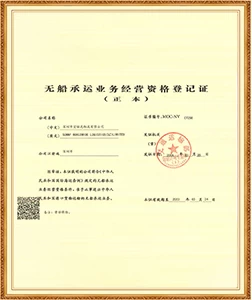Container ship capacity demand rises 12%: shipping industry welcomes strong recovery
Sunny Worldwide LogisticsIt is a logistics company with more than 20 years of transportation experience, specializing in Europe, the United States, Canada, Australia, Southeast Asia and other markets. It is more of a cargo owner than a cargo owner~

Recently, good news has come from the global shipping market. Driven by multiple factors, the demand for container shipping capacity has achieved significant growth, with an annual increase of up to 12%. This figure demonstrates that the shipping industry is experiencing a strong recovery period.
According to the latest report from Clarksons Research, the surge in demand in the container shipping sector this year is mainly affected by geopolitical instability and route adjustments. The ongoing conflict in the Red Sea has led to frequent attacks by the Houthi armed forces on merchant ships, forcing a large number of ships to choose to sail around the Cape of Good Hope in South Africa, thus significantly increasing the transportation demand for container ships. This change not only increased the overall ton-mile demand of the shipping industry by about 3%, but also produced a significant growth of up to 12% in the container shipping sector.
The report pointed out that as an important hub for international shipping, the Suez Canal's ship transit volume has dropped significantly due to the impact this year. Ship transit through the Suez Canal is down about 70% compared to the 2023 average. Transit volumes for cruise ships, car carriers and LNG carriers have all fallen by about 9%, while transit volumes for bulk carriers and oil tankers have dropped by 40-50%. This change has forced most container shipping companies around the world to re-plan routes and avoid the Red Sea region. This trend is expected to continue until 2025.
At the same time, the Panama Canal, another important shipping channel, has also experienced similar challenges and recovery. Affected by low water levels last year, ship transit through the Panama Canal was significantly restricted. However, as canal managers took proactive steps to improve water management, transit restrictions on the canal were gradually eased and traffic volumes improved significantly by the end of the year. In the latest week, ship transit through the Panama Canal reached 10.3 million gross tons, close to the 2023 average and up 35% from the lows at the beginning of the year.
The rise in container ship capacity demand is not only reflected in route adjustments, but is also supported by shipping market data. According to the latest data from Alphaliner, as of October this year, the total number of container ships in operation worldwide has increased to 7,126, with a total transport capacity of 30,910,042 TEU, and ship tonnage and load capacity also climbed to 366,562,895 tons. This growth reflects market activity and continued demand for shipping capacity.
On the liner side, the market performance was equally strong. The Clarkson Shipping Index shows that the container shipping market was hot in the first three quarters of this year, with an average of US,539 per day, a year-on-year increase of 11%, and 43% higher than the average of the past 10 years. Entering the fourth quarter, the container shipping market continues to maintain a good momentum, with liner companies announcing price increases and adjusting route layouts to cope with market demand. For example, the "Gemini" alliance formed by Maersk and Herbert announced that starting from February 2025, the alliance's container ships will continue to circumnavigate the Cape of Good Hope in response to the unstable situation in the Red Sea region.
Market experts point out that the rise in demand for container shipping capacity is mainly due to the recovery of the global economy and international trade. In the first three quarters of this year, the total value of my country's import and export of goods trade reached 32.33 trillion yuan, a year-on-year increase of 5.3%, providing strong support for the shipping market. In addition, the Asia region's technology exports (especially green energy and artificial intelligence-related products) and the growing global demand for commodities such as iron ore, coal and grains have further promoted the prosperity of the shipping market.
However, the shipping market also faces many challenges. Uncertainty about global macro policies, escalation of trade tensions, increase in tariff barriers and increasing risks of upward inflation may all have an impact on the market. In the future, as the global economy continues to improve steadily, the shipping market still needs to maintain a cautious and optimistic attitude and strive to cope with the challenge of balancing supply and demand.
This year's rise in demand for container shipping capacity not only demonstrates the strong recovery of the shipping industry, but also lays a solid foundation for future market development. As global trade and supply chains continue to recover and adjust, the shipping market will continue to maintain its important position as the lifeblood of the global economy.




















